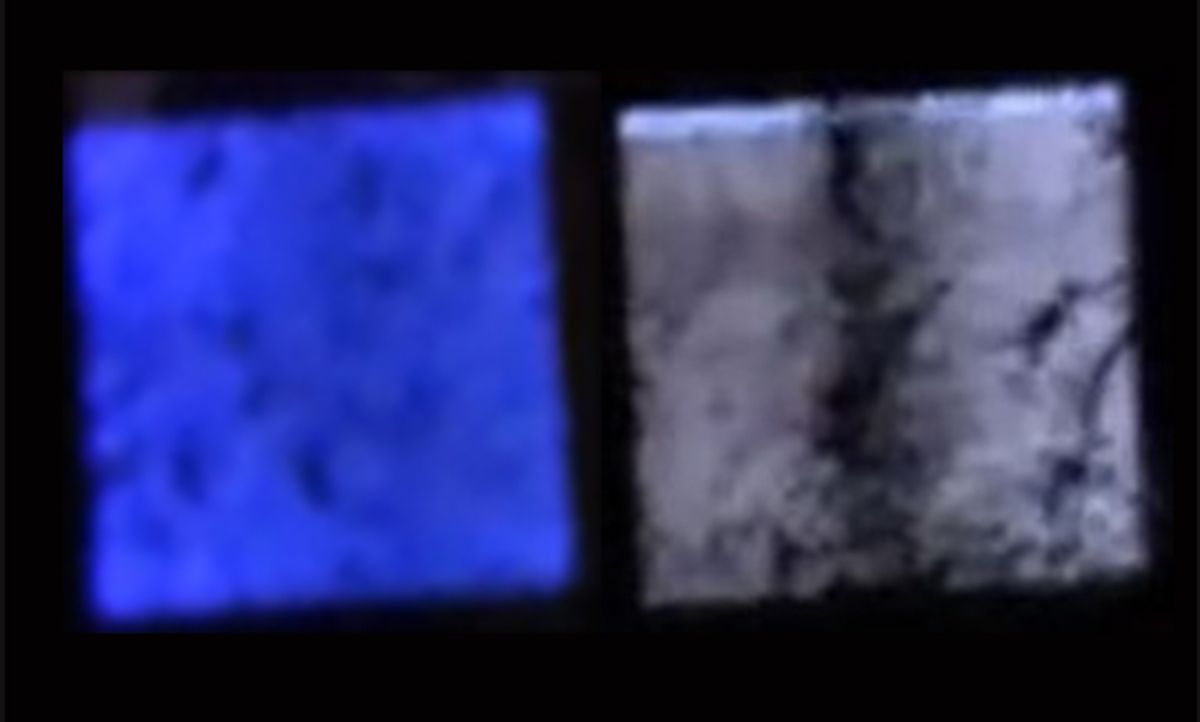Organic light-emitting diodes (OLEDs) have come a long way since the first working device was reported three decades ago. Prized for their dark blacks, crisp image reproduction, and power efficiency, today's OLEDs dominate the screens of Android phones and LG televisions. They may take over iPhones as early as next year.
And because OLEDs are cheap and easy to make, we ought to also use them to make white light for general illumination, says Konstantinos Daskalakis, a post-doctoral researcher at Aalto University in Finland.
Except white is an OLED’s Achilles' heel. Typically, to get white light, individual red, green, and blue emitters shine at the same time. This makes white the most power-hungry color, reportedly requiring six times as much power as it takes to produce the color black on a Google Pixel. Other strategies to generate white light include carefully doping emitting layers with chemicals, but this approach makes it harder to fabricate devices.
In a proof-of-concept experiment, Daskalakis and his supervisor Paivi Torma converted conventional blue-emitting OLEDs to white-emitting ones simply by depositing a distributed Bragg reflector (DBR)—a stack of two alternating materials with high and low refractive indexes—on top of the OLEDs.

To make the devices, Daskalakis first prepared blue-emitting OLEDs with standard vacuum evaporation techniques. Then, he sputtered a DBR comprising of six alternating layers of silicon dioxide and tantalum oxide directly on top of each OLED.
DBRs are usually used as reflective mirrors to create optical cavities in devices. Instead, Daskalakis and Torma decided to use a DBR as a converter, leveraging so-called Bragg modes that resonate within a DBR. The Bragg modes can be tuned by varying the thickness of the DBR's layers. Those modes are made to occur at red, green, and blue wavelengths, so as the OLED’s blue light passes through the DBR, some high-energy blue photons relax into lower-energy red and green photons, Daskalakis says. The mixture of red, green, and blue photons emerging from the device produces white light.
With that approach, the light’s color temperature could be tuned by varying the structure of the DBR stack. In one device, the silicon dioxide layer was 43 nanometers (nm) thick and the tantalum oxide layer was 41 nm thick. That device produced a warm, daylight white color with the temperature 6007 K. Another device with 53-nm-thick silicon dioxide layers and 42-nm tantalum oxide layers generated a cool white light with a temperature of 4450 K.
Meanwhile, the device's quantum efficiency could be optimized separately by applying the reflector to different types of OLEDs. Compared to the plain blue OLED, the converted white OLEDs exhibited a 20 percent higher quantum efficiency. The converted white OLEDs also continued working after two months, whereas the plain blue OLEDs stopped working after the second day.
Torma hopes this work inspires other researchers to find more uses for DBRs. “They are kind of overlooked,” she says. Bragg modes in particular have been neglected: “They are kind of broad or lossy modes, and people often think that it’s better to have very narrow modes,” she says. “But we saw that these actually work very well for our purpose.”
The duo has filed for a patent and is working to further characterize and optimize the device’s design for potential applications in lighting and consumer electronics.



